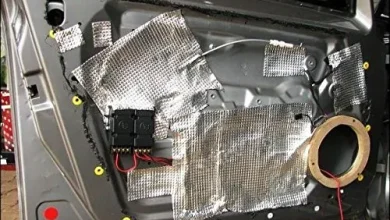Top 5 Reasons for Car Body Roll and How to Fix Them

When a car leans to one side during turning or cornering, it’s known as car body roll. This is frequently caused by instability. One of the main causes is poor suspension parts, including struts or shocks, which lessen the vehicle’s capacity to absorb stresses. Reduced stability and grip might also result from worn tires or inappropriate tire pressure. SUVs and trucks with a high center of gravity are more likely to experience body roll.
Handling is impacted by unbalanced weight distribution, and lateral movement is not controlled by damaged anti-roll bars or bushings. Maintaining appropriate tire pressure, repairing damaged parts, and, if necessary, improving suspension systems are all part of the solution to these problems.
1. What is a car body roll?
The term “car body roll” describes how an automobile’s body tilts or sways laterally when negotiating curves or corners. Body roll is the obvious outcome of this weight transfer. This phenomenon is influenced by a number of elements, each of which is essential in determining how an automobile handles.
The term “car body roll” describes how an automobile’s body tilts or sways laterally when negotiating curves or corners. The noticeable result of this weight transfer is body roll. This phenomenon is influenced by a number of elements, each of which is essential in determining how an automobile handles.

2. Reasons for Car Body Roll
Worn Suspension Components
Suspension parts like shocks, struts, and springs that are worn out or damaged are essential for preserving vehicle stability and reducing body roll. These components are intended to maintain the car level during twists and bumps by absorbing stresses from the road. Excessive body roll results from their diminished capacity to attenuate motions when they wear out.
Improper Tire Pressure
Whether too high or too low, improper tire pressure can have a big impact on how a car handles and cause body roll. The car is more likely to lean during turns when the tires are underinflated because they have less contact with the road, which decreases traction and stability. Conversely, overinflated tires may result in a smaller contact patch, which would make the ride rougher and cause more body roll.
High Center of Gravity
Body roll is more likely to occur in vehicles with a high center of gravity, such as trucks, SUVs, and tall cars. The body will lean outward during twists and cornering if the vehicle’s center of gravity is higher because it can shift weight more easily. The vehicle becomes less stable and more likely to tilt as a result of this significant weight transfer.
Excessive Speed During Turns
Body roll may become more noticeable when taking turns at high speeds because this increases the centrifugal force pushing on the vehicle. A car’s weight shifts to the outside wheels, and the body leans as a result of the force pushing the car outward when it curves swiftly. In taller vehicles with a greater center of gravity, this is particularly apparent.
3. Benefits of Reducing Body Roll
Improved Handling
Better Handling: By keeping the automobile more level throughout turns, reducing body roll greatly improves a vehicle’s handling. Reduced body roll improves the vehicle’s grip and responsiveness by keeping the tires in better contact with the road. Better cornering performance, faster responses to driving inputs, and more accurate steering are made possible by this.
Increased Stability
By reducing excessive tilting during curves or sharp maneuvers, body roll reduces and enhances a vehicle’s overall stability. The vehicle maintains a more level and balanced stance when body roll is reduced, which aids in the even distribution of weight over all four tires. This lessens the possibility of the car toppling over or losing control, especially during sharp turns or emergency scenarios.
Longer Tire Life
A vehicle’s tires will retain more even contact with the road during turns and corners if body roll is reduced. Excessive leaning causes the outer tires to wear down more quickly while the inner tires might not make contact. Premature tire degradation is caused by this uneven wear.
Better Cornering Performance
A car may corner more smoothly, quickly, and controllably when body roll is reduced since it increases the vehicle’s grip on the road during turns. At greater speeds, this leads to improved handling and stability.
Conclusion
In order to maximize a car’s handling and stability, it is imperative to comprehend vehicle body roll. Drivers can successfully lessen body roll by modifying the suspension geometry, modifying the CG and RC, and using stiffer components. This improves the entire driving experience and guarantees a safer and more pleasurable ride.
FAQs
1. What causes body roll in a car?
Unbalanced weight distribution, high center of gravity, excessive speed during turns, damaged suspension parts, and poor tire pressure are some of the causes of body roll, which causes the car to lean to one side when turning.
2. Does body roll affect vehicle handling?
Indeed, body roll impairs stability and grip, making it more difficult to control the vehicle during bends and corners. This can result in less accurate steering and slower reaction times.
3. Can body roll be reduced in vehicles with a high center of gravity?
Yes, there are a number of ways to lessen body roll in cars with a high center of gravity, such as trucks or SUVs. Body roll can be reduced by installing performance suspension parts, such as anti-roll bars (sway bars), firmer shocks, or struts, which increase the vehicle’s stability in turns.



